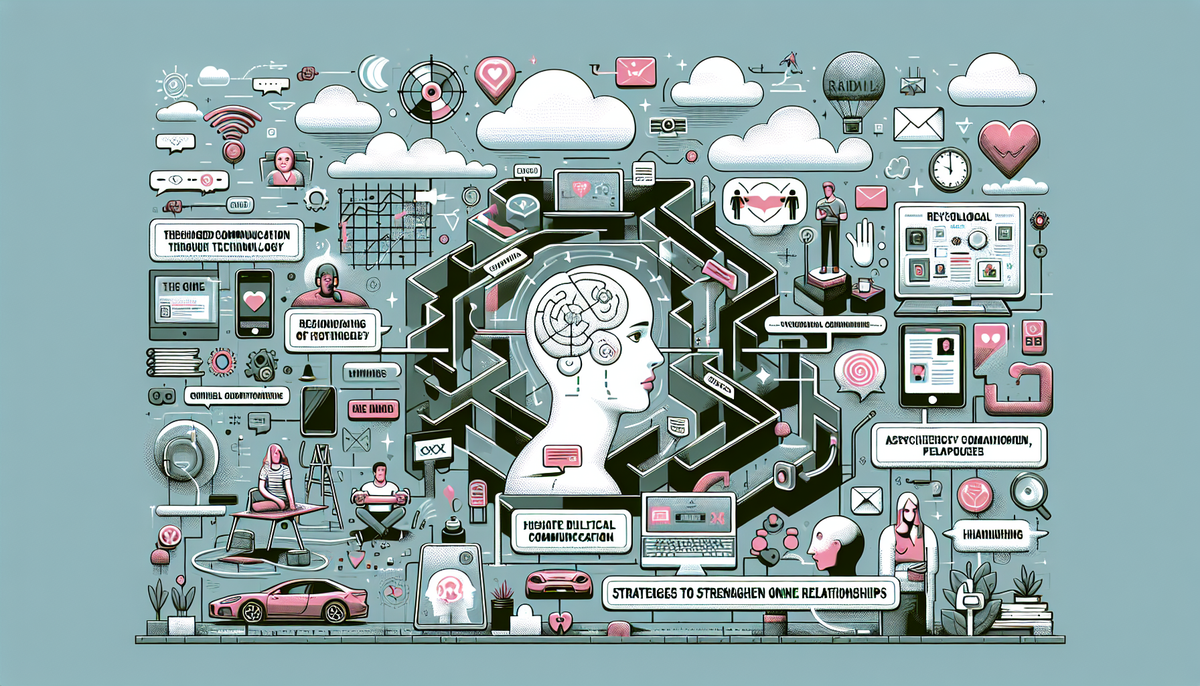Digital Closeness: Staying in Touch Online

The New Blueprint for Connection: Why Digital Closeness Matters
In a world where our lives are increasingly intertwined with technology, the concept of closeness has expanded beyond physical proximity. Digital closeness is the new frontier of human connection, allowing us to build and sustain meaningful relationships with family and friends regardless of geographical boundaries. From quick texts to immersive virtual hangouts, the ways we stay in touch have evolved, making online friends and virtual bonding essential components of a healthy social life. This article explores how to master the art of digital closeness, ensuring your relationships thrive in our connected world.
From Far Apart to Always On: Redefining Proximity
Not long ago, a long-distance friendship was sustained by occasional letters and expensive phone calls. Today, the digital age has redefined what it means to be "close." Proximity is no longer just about shared physical space; it's about shared digital space. We can now share moments, offer support, and experience life together in real-time through a variety of online platforms. This constant connectivity has transformed our ability to stay in touch, turning what used to be a challenge into a seamless part of daily life. The key is to leverage these tools to foster genuine virtual bonding, creating a sense of presence and intimacy that transcends distance.
The Psychology of Virtual Bonding: It's Real and It's Powerful
Skeptics may question the validity of online friendships, but the psychology behind virtual bonding is solid. These relationships are built on the same foundations as in-person ones: mutual interests, shared vulnerability, and consistent communication. In some ways, the focus on conversation in online interactions can accelerate intimacy, as individuals get to know each other on a deeper level without the distractions of the physical world. The act of choosing to connect, to schedule a call, or to send a thoughtful message is a powerful indicator of commitment, strengthening the bond between online friends and family members alike.
Actionable Strategies for Stronger Online Bonds
Cultivating digital closeness requires more than just a Wi-Fi connection; it requires intention and creativity. By adopting specific strategies, you can transform passive online interactions into active, fulfilling relationships. These techniques are designed to help you stay in touch in more meaningful ways, fostering deep and lasting virtual bonding.
Go Beyond the Text: The Power of Voice and Video
While texting is convenient, it lacks the nuance of voice and the richness of face-to-face interaction. To truly connect, make a habit of incorporating voice notes, phone calls, and video chats into your communication routine. Hearing a friend's laughter or seeing a family member's smile creates a much stronger emotional connection than reading words on a screen. Schedule regular video calls to catch up, celebrate milestones, or simply share a cup of coffee together, virtually. These multi-sensory interactions are crucial for maintaining the depth of your relationships.
Shared Digital Spaces: Creating Experiences Together
One of the best ways to nurture online friendships is by creating shared experiences. Technology offers a playground of opportunities for virtual bonding. You can watch a movie simultaneously using a streaming party extension, explore new worlds together in an online game, create a collaborative music playlist, or take an online course together. These shared activities create new memories and inside jokes, mirroring the experiences that bond people in the physical world and providing new things to talk about, helping you stay in touch effortlessly.
The Art of Thoughtful Asynchronous Communication
Not all communication has to be in real-time. Asynchronous communication—interacting on your own schedule—is the backbone of staying in touch online. Elevate your asynchronous game by leaving thoughtful comments on a friend's social media post, sending an interesting article you know they'll appreciate, or emailing a longer, more personal update. These gestures show you're thinking of them even when you're not actively conversing. It proves that the connection is persistent, building a steady and reliable sense of closeness.
Navigating the Hurdles of Digital Relationships
While digital closeness offers incredible benefits, it's not without its challenges. From miscommunication to burnout, navigating the online social landscape requires awareness and skill. By understanding and addressing these potential pitfalls, you can build more resilient and rewarding online connections.
Decoding Digital Body Language and Avoiding Misinterpretation
The absence of physical cues like body language and tone of voice can lead to misunderstandings. A short, direct text can be interpreted as anger, and sarcasm can easily fall flat. To avoid this, be clear and expressive in your communication. Use emojis, GIFs, and punctuation to add emotional context. When a topic is sensitive or complex, default to a voice call or video chat to prevent misinterpretation. Being mindful of these nuances is key to healthy online friendships.
Combating "Zoom Fatigue" and Digital Burnout
The very technology that connects us can also overwhelm us. "Zoom fatigue"—the exhaustion associated with back-to-back video calls—is a real phenomenon. To combat digital burnout, it's important to set boundaries. It's okay to decline a virtual hangout if you're not feeling up to it. Vary your communication methods, mixing video calls with lower-pressure options like text and voice notes. Prioritize quality over quantity; a single, meaningful conversation is more valuable than several draining ones. This balance is crucial for making your efforts to stay in touch sustainable and enjoyable.
Conclusion: Weaving Digital Threads into a Strong Social Fabric
Digital closeness is not a replacement for in-person connection, but an essential and powerful extension of it. By intentionally choosing our tools, creating shared experiences, and communicating thoughtfully, we can build and maintain strong, supportive relationships with online friends and family. The future of friendship is a hybrid model, a beautiful tapestry woven from both physical and digital threads. Embrace the possibilities of virtual bonding and invest in the people who matter most, for a richer, more connected life, no matter the distance.


